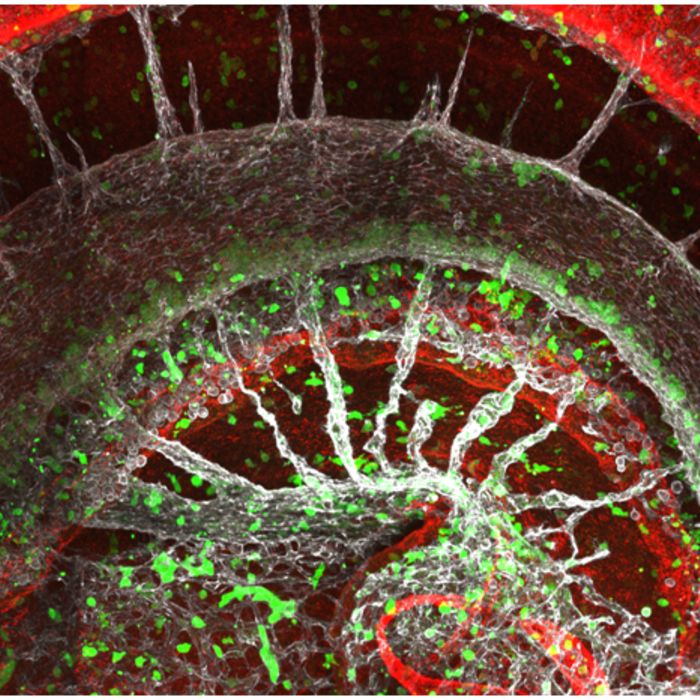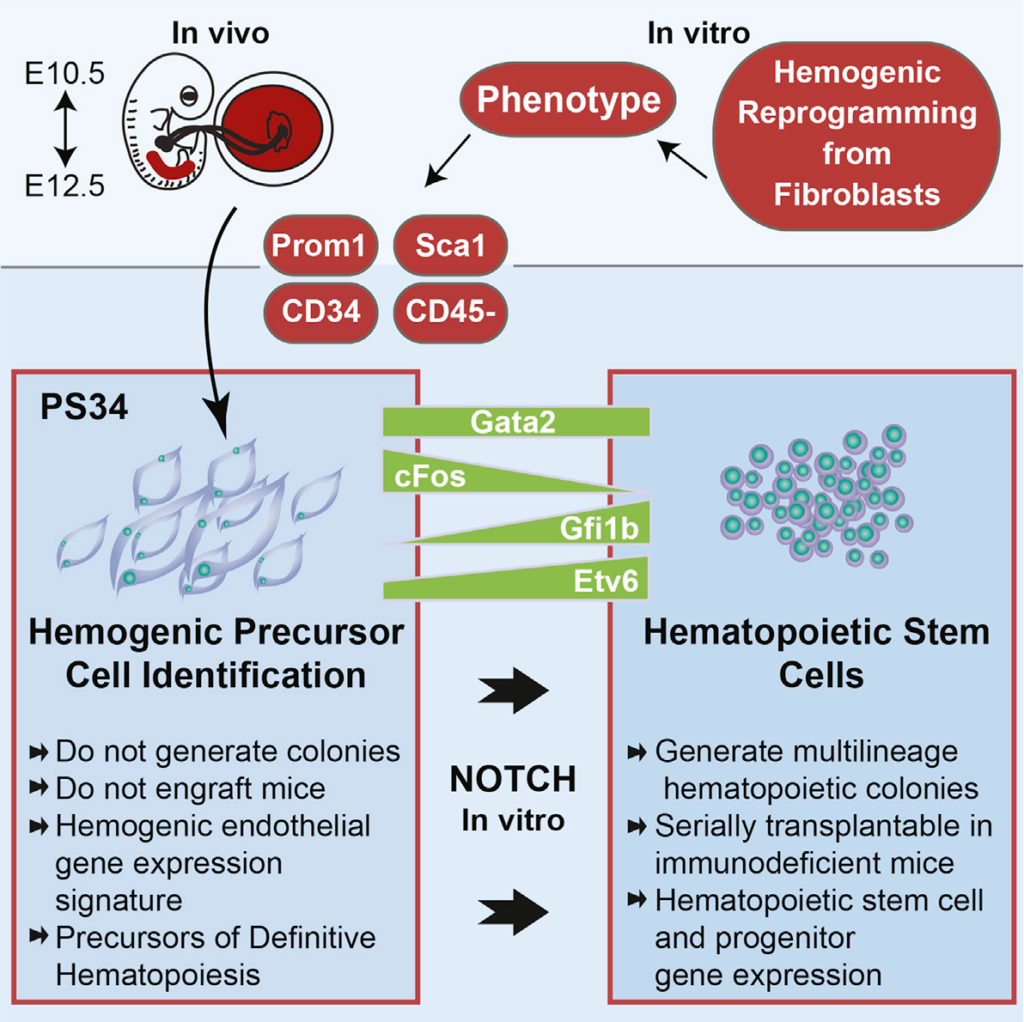Publications
Hematopoietic Reprogramming In Vitro Informs In Vivo Identification of Hemogenic Precursors to Definitive Hematopoietic Stem Cells

March 7, 2016 / Volume 36, Issue 5
Developmental Cell
Carlos-Filipe Pereira, Betty Chang, Andreia Gomes Jeffrey Bernitz, Dmitri Papatsenko, Xiaohong Niu, Gemma Swiers, Emanuele Azzoni, Marella F.T.R. de Bruijn, Christoph Schaniel, Ihor R. Lemischka, Kateri A. Moore
Highlights
- Direct reprogramming informs identification of hemogenic precursors (HP) in vivo
- HP cells display a Prominin1, Sca1, CD34 phenotype that is also CD45 negative
- Gene expression signatures were established at the population and single-cell level
- HP cells can be matured into bona fide hematopoietic stem cells
Abstract
Definitive hematopoiesis emerges via an endothelial-to-hematopoietic transition in the embryo and placenta; however, the precursor cells to hemogenic endothelium are not defined phenotypically. We previously demonstrated that the induction of hematopoietic progenitors from fibroblasts progresses through hemogenic precursors that are Prom1(+)Sca1(+)CD34(+)CD45(-) (PS34CD45(-)). Guided by these studies, we analyzed mouse placentas and identified a population with this phenotype. These cells express endothelial markers, are heterogeneous for early hematopoietic markers, and localize to the vascular labyrinth. Remarkably, global gene expression profiles of PS34CD45(-) cells correlate with reprogrammed precursors and establish a hemogenic precursor cell molecular signature. PS34CD45(-) cells are also present in intra-embryonic hemogenic sites. After stromal co-culture, PS34CD45(-) cells give rise to all blood lineages and engraft primary and secondary immunodeficient mice. In summary, we show that reprogramming reveals a phenotype for in vivo precursors to hemogenic endothelium, establishing that direct in vitro conversion informs developmental processes in vivo.
